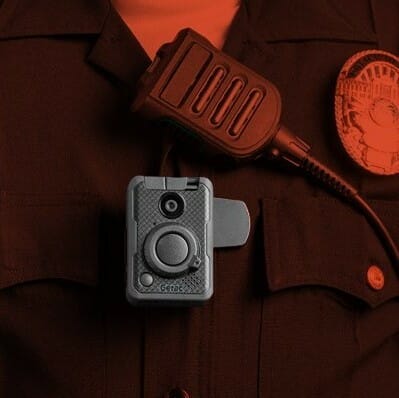In today’s blog Lindsey Cooksey, Brite’s Eastern Public Safety Manager, touches on major points most have overlooked with Body Worn Camera technology.
Body Worn Cameras (BWC) are the latest hot topic technology being called for and implemented as part of a police officer’s uniform. With recent shootings and other officer involved incidents sparking outcry from communities and civil rights advocates for the cameras, they are the focus of many City IT departments and community discussions However, while BWC’s will assist in understanding an officer’s visual perspective during a high intensity moment, and in many cases split second decision, it raises the question of if society understands the full effects of BWC on it?
The implementation of BWC’s will ultimately have various effects in the communities they are utilized in various ways. I think everyone can agree the use of BWC’s can positively impact a community. They can assist in building trust, accountability and transparency between law enforcement and the community they serve. The technology helps to keep officers and the community safe by reducing police generated incidents and assaults against police. They can also assist in the prosecution of cases and reviews of complaints by introducing digital evidence into the courtroom. However, with the good comes the less discussed – the loss of privacy and the cost.
Privacy: Body Worn Cameras can infringe on a citizen’s expectation of privacy. There are many incidents that could potentially be recorded that present concern. Body Worn Cameras can capture video of domestic dispute incidents, calls involving children or crime victims, or simply someone’s raw emotion or poor behavior during an intense situation.
We ask ourselves:
Do BWC’s make it harder for a victim or a witness to come forward for fear of retaliation or everyone knowing their story? The goal is not to deteriorate a witness, but protect those that are in an intense situation. What is often overlooked is the benefit for police agencies to be able to review footage, identify a witness and bring justice to a victim.
It is easy to record and pass judgment on someone else’s actions, but would we want the camera turned on us in the same scenario? Body Worn Cameras scrutinize the public as much as they do the police.
Cost: The procurement and management of BWC’s is a multi-faceted undertaking that few community members truly understand. Yes, of course, there is the cost to acquire the cameras themselves, depending on the camera and its various features this can range from $200-$1,000 each, but the costs don’t stop there. A backend software program must be purchased in addition to the hardware camera purchase. This software allows for video classification into categories based on incident types and associating information with the video such as including officer name. the software also allows for viewing, management of video for easy access and retrieval, as well as provide an audit trail of who accesses the video.
Again, more questions arise:
How do you get the video from the cameras to the office? This requires either a physical offload station in the building, think multiple docks connected to the office network to offload video, or in a larger department where a physical offload is not feasible, it requires the implementation of WIFI access points or cellular routers to offload the video back to the department’s network.
What about once the video arrives at the department? In either case whether hard docked or wirelessly transmitted that video must be stored for a certain period. Typically, the retention period is anywhere from 30 days to indefinitely. This is depending on the nature of the video, department policy and the statute associated with the crime it captures. Storage is either found in physical hardware at the department or in the “cloud”, both come with large price tags that continue to grow as the amount of video grows. Large departments (several hundred officers) can be looking at storage needs in the petabytes. The storage and network connection must be properly secure, we have recently seen network breaches. With the correct technology in place, a Police Department would be able to avoid a breach, thus securing their digital evidence.
Who maintains the data to not break the chain of custody, or oversees maintenance of the hardware? Someone must oversee redacting video for FOIA requests and court purposes. Depending on the size of the department this could be a full-time position for one or more people. In addition, BWC’s must be maintained; hardware breaks in scuffles, batteries die, networks need to be updated, software has maintenance fees, etc. These items add up to big expenditures for police departments and ultimately the taxpayer, which is not always a consideration when communities are pushing for these technologies.
The deployment of Body Worn Cameras should not be handled as a knee jerk reaction to a current situation. They are an investment that should be well thought out and careful deployed to protect the integrity of our communities, our law enforcement, and our citizens.
Considering a Body Worn Camera implementation project, but have additional questions? Reach out and we would be happy to help!

